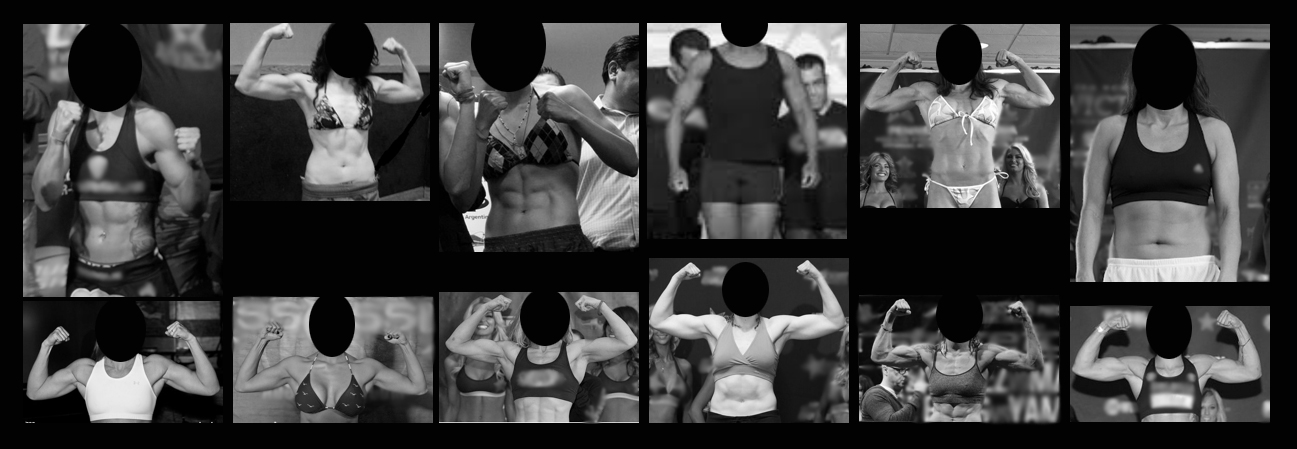How are bodies shaped?
First, let's start with a little exercise.
Find the trans fighter(s) in the collage below. There is at least one, but we might try to mess with your head and post pictures of multiple trans athletes. If you an an MMA or boxing fan, don't try to guess based on what promotion they're fighting at, their tattoos, or what they are wearing. Just use the shape of their body.
Click here for the answer. Take your time. It's not as easy as you think.
If you like it then you shoulda put a graph on it
There is tremendous variation, even within genders, among body shapes. To demonstrate this, we have provided an interactive graph that shows the measurements of more than 500 men and women.
|
|
|||
|---|---|---|---|
| Below overlap | Overlap | Above overlap | |
| Women () | |||
| Men () | |||
|
: Heinz, Grete, et al. "Exploring relationships in body dimensions". Journal of Statistics Education 11.2 (2003). |
|||
Common sense would seem to be that trans women have a competitive advantage over non-trans women because they experienced puberty under the influence of testosterone.
The reality is that the body dimensions of men and women overlap. The average (mean) of a measurement might be different between men and women, but there is tremendous overlap between genders in the range of most measurements.
Here we have provided a graph that you can interact with. A study by Heinz, Greite, et al called "Exploring relationships in body dimensions" collected a set of measurements from 247 men and 260 women. These measurements included weight, and height, plus a wide variety of skeletal measurements. We used the data from this study to build the graph. With these measurements, you can build a pretty accurate model of the dimensions of a person's skeleton. The study discusses using a variety of variables to predict the gender of a body based on the dimensions of its skeleton. It is about 90% accurate, which is to say, one in ten skeletons will be misidentified both by statistics and by an expert as being from the wrong genetic sex.
On the graph, we have shown each measurement (orange for men, cyan for women) as a circle. The Y (up/down) axis shows the measurement in the unit specified (normally kilograms or centimeters). Each dot on the X (left/right) axis is a different person in the study. The darker solid orange and cyan lines show the highest and lowest measurements for each gender, and the lighter dashed orange and cyan lines show the average for each gender.
Click the checkbox next to the measurement you want to see. Hover over the question mark next to the name of a measurement to get more information about where that measurement comes from.
Things to notice
There is significant overlap between the genders. That is, most measurements fall between the upper boundary for the smaller gender (usually women) and the lower boundary for the larger gender (usually men). In practical terms, this means that you can't say "men are shaped like this and women are shaped like that". The best you can say is that "the average size of men is slightly larger than the average size of women in this measurement, but there are men who are smaller than the average woman and women who are larger than the average man".
References: Heinz, Grete, et al. "Exploring relationships in body dimensions". Journal of Statistics Education 11.2 (2003).